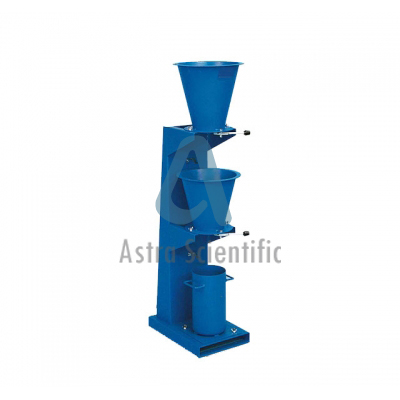Description and Specification for Lab Tenders
Compaction Factor Test for Concrete.
Compaction factor test is the workability test for concrete conducted in
laboratory. The compaction factor is the ratio of weights of partially
compacted to fully compacted concrete. It was developed by Road Research
Laboratory in United Kingdom and is used to determine the workability
of concrete.
The compaction factor test is used for concrete which have low workability for which slump test is not suitable.
Apparatus
Compaction factor apparatus consists of trowels, hand scoop (15.2 cm
long), a rod of steel or other suitable material (1.6 cm diameter, 61 cm
long rounded at one end ) and a balance.
Procedure for compaction factor test:
1. Take M20 grade concrete.
2. Prepare the mix with 1:1.5:3 by adding a required amount water as per Water cement ratio. Now mix the fresh concrete.
3. See that the Inner surfaces of conical hoppers should be free from
moisture and apply grease to it. Close the trap door of the upper
hopper.
4. Then measure the weight of the empty bottom cylinder and note it as W1
5. Fill the fresh concrete into the upper conical hopper using trowel without compacting it.
6. Nextly, trap door of an upper hopper is opened. Thus the concrete falls on the lower hopper.
7. Wait for 2-3 secs and check whether the entire concrete is fallen
from the upper hopper to bottom hopper. If not, slight tamping is done
until the whole concrete falls to the bottom hopper.
8. Now open the bottom hopper trap door, and entire concrete is
fallen to the cylinder. Cut off the excess concrete on the top surface
of a cylinder using the trowel.
9. Weight the cylinder with partially filled concrete as W2.
10. Then the cylinder is emptied, and the concrete sample is filled
again by filling it in 3 layers each layer is compacted by giving 25
blows using the tamping rod. Now, the concrete inside the cylinder is
fully compacted.
11. Measure the weight of cylinder with fully compacted concrete and note it as W3.

